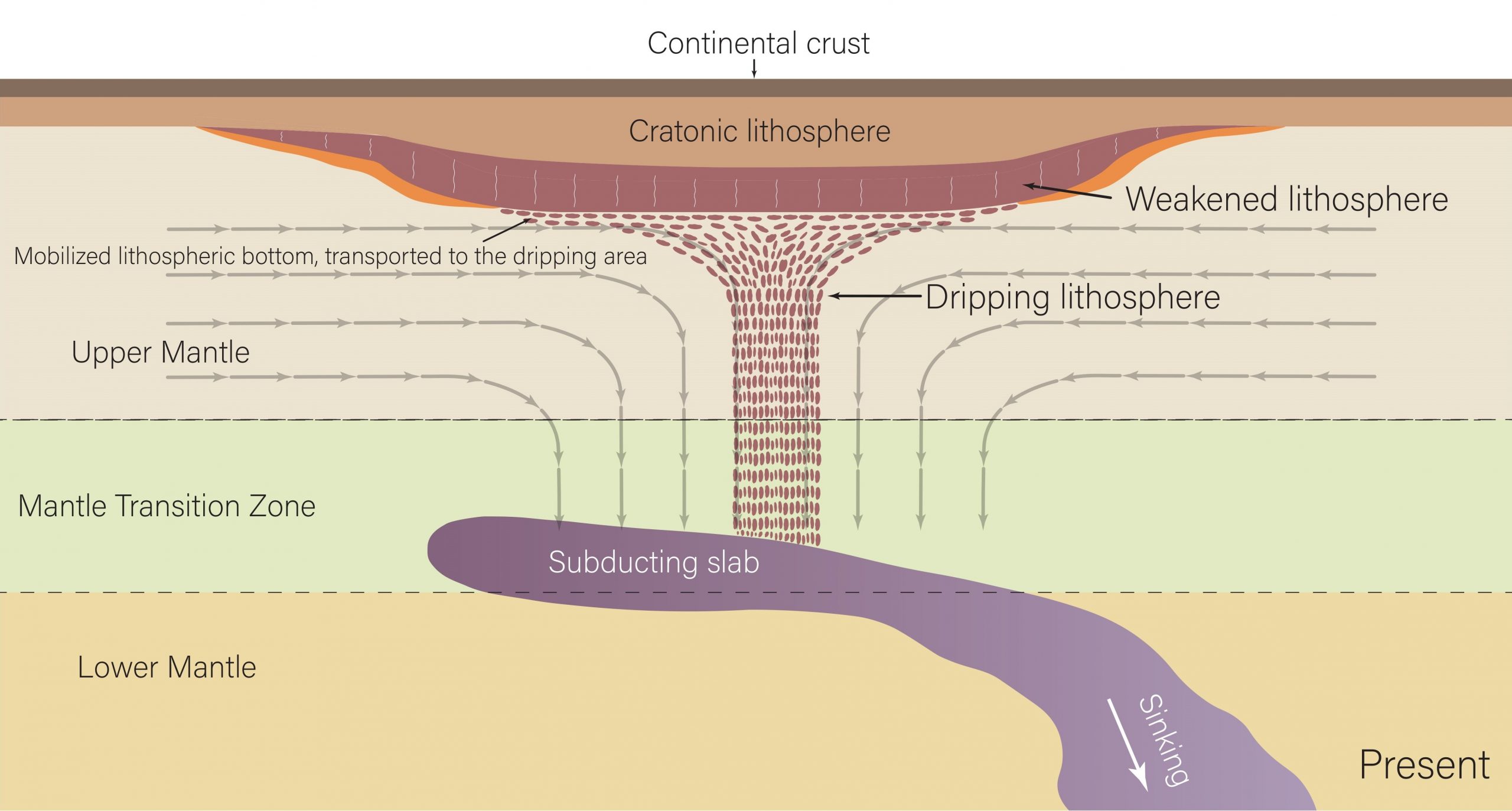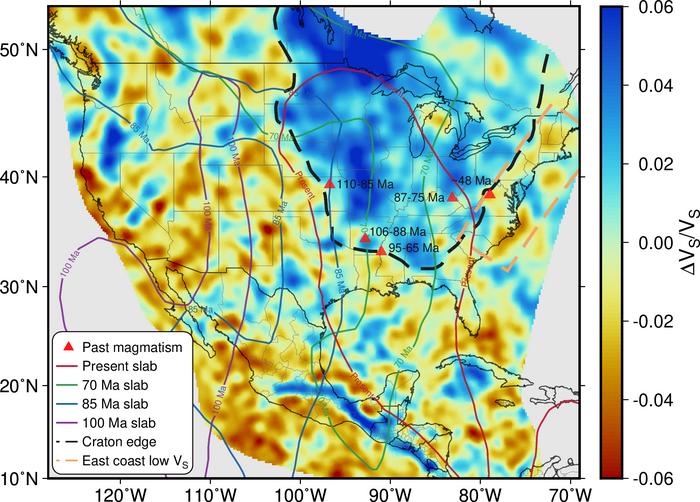Cratonic thinning, a phenomenon geologists think happened hundreds of millions of years ago, appears to be taking place far beneath researchers’ feet.
Earth’s continents have regions of very old and stable rocks, known as cratons, surrounded by regions whose age is measured in tens or hundreds of millions of years, rather than billions like the cratons.
Yet even those most stable regions aren’t completely permanent. Not only can wind and water erode them from above, but the deepest layers can be removed from below, as is thought to have happened to the North China Craton during the age of dinosaurs.
Until now, however, the idea of cratonic thinning has been based on evidence left over from ancient events, and we’ve had to guess the causes. According to Professor Junlin Hua, who did much of the work while at the University of Texas at Austin, it’s happening today to the North American Craton, also known as Laurentia. Moreover, Hua and co-authors think they have an idea why.
“We made the observation that there could be something beneath the craton,” Hua said in a statement. “Luckily, we also got the new idea about what drives this thinning.”

Diagram showing how the authors believe the rock is dripping from the craton.
Image credit: Hua et al., Nature Geoscience
More of North America’s Craton lies in Canada than the USA, but the authors think the thinning is predominantly occurring beneath the American Midwest.
There the craton is losing its base from below, a process Hua and co-authors attribute to large portions of the craton’s lowest layer dripping off into the mantle. We can’t witness it directly, but geologists can observe developments in close-to-real-time by tracking the rate at which seismic waves from earthquakes move through the craton. That gives us a much better opportunity to make sense of the details than an example from the deep past.
“This sort of thing is important if we want to understand how a planet has evolved over a long time,” said Professor Thorsten Becker. “It helps us understand how do you make continents, how do you break them, and how do you recycle them [into the Earth.]”
The team used a new method of mapping the undersides of continental crust known as full-waveform seismic tomography. They found the first signs of large drips detaching from the craton and sinking into the mantle.

The speed of seismic waves 200 kilometers (124 miles) deep in the Earth’s crust beneath North America. The North American craton (outlined in black dashes) has a high seismic velocity compared to its surroundings, but that’s changing at the margins.
Image credit: Nature Geoscience, Hua et al.
Observing the drips’ location led the researchers to identify the Farallon Plate as the culprit. The Farallon was an oceanic plate that once made up a large portion of Panthalassa – the single giant ocean that coincided with the existence of Pangea during the Jurassic. North America started riding over the Farallon almost 200 million years ago, forcing much of it into the mantle, while parts survive at the surface as smaller plates such as the Nazca.
It seems the Farallon is getting its revenge. Although now far beneath the thinning part of the craton, the Farallon is redirecting the flow of material through the mantle. The authors think this flow is causing greater shearing forces and weakening the base.
The team were able to link what has happened at the bottom of the craton with some events at the surface, for example rocks formed 70 million years ago in what is now Kentucky.
All this may sound a little frightening, and maybe someone will make a disaster movie where Laurentia thins so much it splits open and the mantle pours through. It wouldn’t be realistic, however.
It is said “there’s a great deal of ruin in a nation”, and the same is true of a continent. Cratons didn’t get to be most of the age of the Earth by buckling to every washed-up former oceanic plate that comes along. The North China Craton’s still here, and Laurentia will be with us for a long time to come. The thinning is taking place slowly, and will eventually ease and probably stop as the Farallon sinks deeper into the mantle.
There’ll always be an America – and a Canada too.
The study is published in Nature Geoscience.
Source Link: North America Is Dripping Into Earth's Mantle And An Ancient Victim Is Probably To Blame